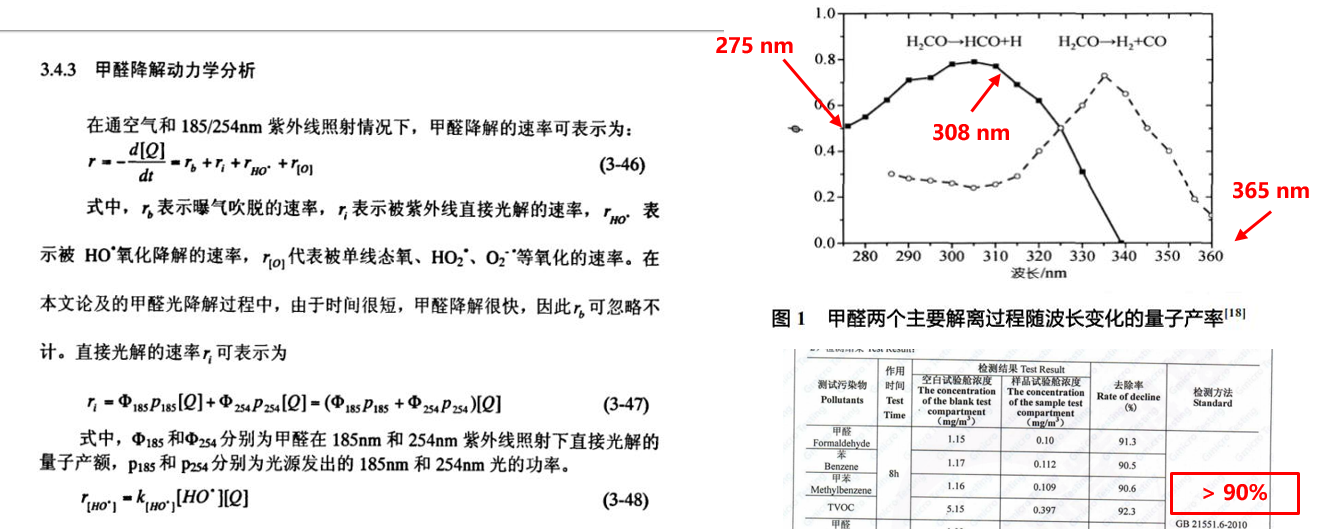
There are two kinetic processes for the decomposition of formaldehyde by ultraviolet radiation: one is direct photolysis interrupted by ultraviolet radiation; The second is that ultraviolet radiation reacts with water in the air to produce OH radicals, which decompose formaldehyde. (Mercury lamp tube can be used). Deep ultraviolet radiation can directly decompose organic pollutants such as formaldehyde by breaking its chemical bonds
Can deep ultraviolet light decompose organic pollutants such as formaldehyde? Actually, many people think it shouldn't work, but in reality it can. The bond energy of the O-O bond is 5.1 eV, corresponding to 243 nm, but the necessary C-H bond energy in organic compounds is 4.31 eV, corresponding to 283 nm, and the C-O bond energy is 3.39 eV, corresponding to 366 nm. Ultraviolet photons with energy higher than the bond energy can break it, just like they break DNA molecular chains, so ultraviolet radiation can decompose formaldehyde
But we should also note that the decomposition process of formaldehyde is actually very complex, and its two decomposition processes are directly related to the wavelength. Quantum yield changes of formaldehyde decomposition process at different wavelengths. Although I don't understand what two peaks are at 305nm and 340nm respectively, there is no doubt that ultraviolet light can decompose formaldehyde on its own. Analogous to toluene TVOC, Ultraviolet radiation can decompose